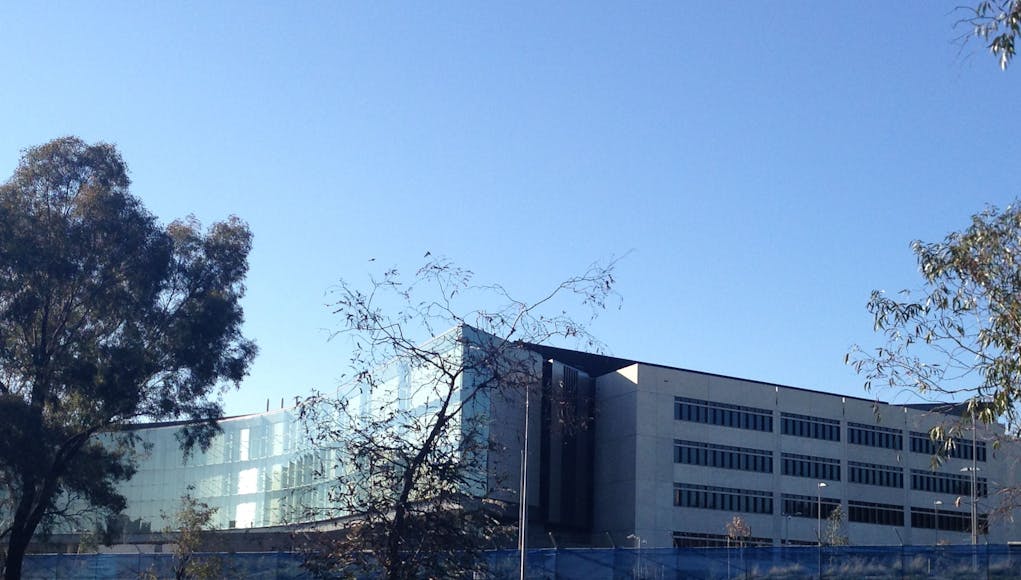Since the early seventies, Australian policy-makers have wanted their country to become a middle power that can play a prominent role in the global economy and diplomacy.
The following article is part of my course framework for the Bachelor of Counterterrorism, Intelligence and Security offered at Edith Cowan University in Perth, Australia. The article has had the references removed in order for it to be presented as a article for this website.
To acquire such capabilities, the government has to rely on the assistance of efficient intelligence services that can provide accurate and up-to-date information required for decision-making. These organisations are also needed to anticipate, identify, and reduce potential threats to the lives of citizens, border integrity, critical infrastructure, and so forth.
This piece will discuss the work of the Australian Secret Intelligence Service (ASIS) and the Australian Security Intelligence Organisation (ASIO). They exemplify many tasks that intelligence services have to undertake. It is important to examine the similarities and differences in their functions. Overall, both of these organisations are responsible for the collection of intelligence; nevertheless, there are some significant distinctions between them; in particular, ASIO is primarily focused on the information about potential dangers to national security, while ASIS can gather various types of data requested by several state departments; moreover, unlike ASIO, ASIS does not act as an advisory agency.
To understand the common elements in the work of ASIS and ASIO, one should first discuss the goals that are set for them by the Australian government. Both of these agencies are included in the Australian Intelligence Community that is supposed to gather information, analyse it, and offer recommendations to policy-makers. ASIS is responsible for collecting intelligence about various foreign affairs that may affect Australia in some way; in its turn, ASIO has to focus on the data related to the security of the country and possible threats. This difference does not imply that these organisations do not have common tasks. One should remember that in many cases, foreign affairs and security risks can be closely related to each other. For example, some terrorist groups that pose a danger to Australian citizens may be funded or supported by the governments of other countries.
Furthermore, people and organisations promoting the interests of other states can instigate politically motivated violence. Moreover, the functioning of these agencies is largely based on the premise that inter-agency cooperation is critical for the timely identification and response to possible risks. Such interactions help them to identify potential threats much more quickly. As a result, ASIS and ASIO often have to cooperate with each other and perform similar tasks. These details are critical for seeing why the functions of ASIS and ASIO can sometimes overlap.
There are several similarities in the roles that these organisations are expected to play. In particular, both of them have to collect information that is required for the proper identification and analysis of risks to which Australia can be exposed. On the basis of this intelligence, the government can take precautions minimising various dangers. Moreover, their findings can be used to develop the security policies of the country.
To a great extent, ASIS and ASIO facilitate the work of legislators and governmental officials. Additionally, both of them are expected to cooperate with foreign intelligence agencies providing that such partnerships can advance the national interests of Australia. For instance, ASIO established contact with more than 300 authorities from 122 countries.
In its turn, ASIS has maintained liaison with such agencies as CIA and MI6 since the early fifties. Additionally, according to the Intelligence Services Amendment Act passed in 2004, ASIS is allowed to be involved in the planning of paramilitary operations conducted by other agencies. In part, these examples suggest that ASIS and ASIO have to employ similar methods in order to attain their objectives. Inter-agency cooperation is one of the strategies that enable them to improve their efficiency. Furthermore, both of them gather data about and from foreign citizens, governmental officials, or businesses. Under such circumstances, ASIS and ASIO can coordinate their activities with each other.
Moreover, in some cases, these intelligence services can collect information about the citizens of Australia. Such steps can be taken if there are reasons to believe that a certain person can pose a threat to national security. They can also do if an individual is suspected of acting on behalf of a foreign state. Therefore, it is possible to argue that the work of ASIS and ASIO have common elements. To a large degree, these similarities are determined by the strategic objectives that these intelligence services have to achieve. To a great extent, these examples suggest that ASIO and ASIS can act at domestic and international levels. In particular, one cannot suppose that ASIS is concerned only with oversees operations while ASIO works within Australian borders. Such an assumption does not accurately reflect the nature and goals of these organisations. The key issue is that their operations are limited by functional boundaries, but not geographic ones. At this point, it is necessary to examine the differences in the functions that ASIO and ASIS fulfill.
There are several important distinctions between these organisations, and one of them is related to the type of data that they are supposed to collect and provide to governmental officials. In particular, one should mention that the primary goal of ASIO is to gather information that is directly or indirectly related to the security of the country. The officers of this agency want to find data about potential threats to the Australian society. They focus on such issues as politically motivated violence, border integrity, attacks on the defense systems or critical infrastructure, activities of terrorist groups and many other issues. For example, this organisation can focus on the activities of terrorist groups like ISIS that recruits its members among Australians.
It is important to remember that ASIO does not monitor only the activities of foreign states or organisations. The activities of Australian citizens can also be of great concern to its employees. For instance, in the past, they carried out the surveillance of anti-coal activists who were suspected of posing a danger to the Hazelwood Power Station. Therefore, one can say that ASIO takes a rather narrow perspective to the collection of information; in other words, this intelligence primarily wants to determine whether certain data are relevant to the national security of the country. This is the key criterion that will be considered. By contrast, ASIS is supposed to collect various types of intelligence that can be requested by Australian policy-makers due to some reasons. This agency can gather information related to such issues as economy, foreign relations, political situation in other countries, security, and many other issues that may have significant implications for Australians. ASIS concentrates on the work of foreign governmental agencies, companies, or individuals. One should keep in mind that this organisation is not independent in its collection requirements.
It is accountable to other governmental agencies such as the Department of Defense, the Office of National Assessment, or the Department of Foreign Affairs and other agencies that determine the policies of the country. Therefore, ASIS cannot set its own principles of gathering information. This is why its officers have to take a broader perspective to the collection of data. Certainly, this agency does not disregard the questions related to national security and potential risks, but these questions are not the only priority of ASIS.
To some degree, these differences are reflected in the authority delegated to each of these agencies. One should bear in mind that ASIO is allowed to take various actions that can restrict the freedom of Australian citizens. For instance, this agency has the right to seize the passports of some individuals and prevent them from leaving the country. Its officers can also interrogate people suspected of terrorism. Admittedly, ASIO has to receive a warrant from the Attorney-General prior to taking such measures. However, ASIS does not have this authority. Its ability to conduct operations within Australia is rather limited. To some degree, this difference can be explained by the fact the activities of ASIO are more closely related to the protection of national security. This aspect is regarded as the topmost priority by policy-makers, and this agency is given greater powers.
Another important distinction is related to the tasks that ASIO and ASIS are supposed to fulfill. It is possible to say that the scope of functions carried out by ASIO is wider. In particular, this agency is supposed to collect information, evaluate it, and give recommendations to policy-makers. The representatives of ASIO emphasise the anticipatory role of this organisation since this task is critical for enhancing the safety of the society. Overall, this agency has to identify potential risks before they could evolve into full-scale problems that can threaten Australians. The suggestions offered by this intelligence service are often reflected in various laws and regulations enacted by the government. By contrast, ASIS is primarily involved in the collection and dissemination of intelligence that may be used by state institutions.
Nevertheless, this organisation does not directly participate in the assessment of data and policy development. One can mention other characteristics that are useful for distinguishing these agencies from each other. In particular, ASIO can operate both within and outside Australia. Providing that a certain task is relevant to the security of the country, its officers will not be stopped by geographic boundaries. In its turn, ASIS conducts its operations predominantly oversees. Nevertheless, it is important to remember that such distinctions are not always relevant because ASIS can also operate in Australia, especially when this agency has to conduct counter-intelligence operations. Hence, spatial attributes of their work should be taken into account, but they cannot illustrate the difference in the functions.
Thus, despite some overt similarities between ASIS and ASIO, one can still argue that these organisations have to carry out different tasks. Firstly, in comparison with ASIO, ASIS is supposed to collect a wider range of data that may be required by Australian legislators, military command, or governmental officials. This distinction exists because ASIS has to meet the demands of many state departments. In its turn, ASIO has a specific and independent agenda that is related to internal and external threats to the security of Australians. These issues are distinguished among all other questions that intelligence services have to investigate. Moreover, ASIO can play an influential role in policy development while ASIS does not have this authority.
Both ASIO and ASIS are responsible for gathering intelligence, bearing relevance to the security of the Australian society; yet, there are certain differences in the work of these agencies; in particular, ASIO is more focused on the information related to various threats such as terrorist attacks; in its turn, ASIS can look for various types of data needed by state departments; furthermore, ASIO takes an active part in the development of policies, while ASIS does not play this role. The major similarity between these organisations is that they must gather intelligence that will help governmental officials to minimise potential risks. On some occasions, they can even work with each other. This argument applies to those situations when the safety of Australian citizens is at stake. Nevertheless, it is possible to identify significant distinctions in the roles of these agencies. First of all, ASIS is obliged to collect various types of data, while ASIO lays stress on the information about potential security risks. Moreover, ASIO is allowed to evaluate information and propose recommendations to governmental officials. Their suggestions often affect the laws adopted by legislators. In its turn, ASIS does not act as an advisory agency.






